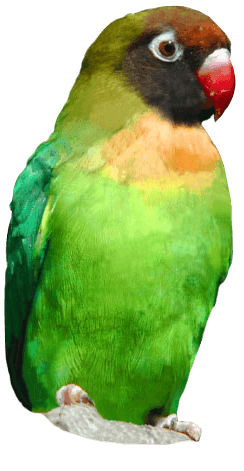
Native Conservation: Creating a Wildflower Meadow
PUBLISHED 22/11/24
Guest post from Jesse Earl, our Gardener and member of our Native Species Conservation Committee

Creating a Wildflower Meadow
Our Conservation Committee has been busy again! After pond dipping in October, November found the team creating a wildflower meadow, which we hope will provide a home for bees, butterflies, amphibians, and more.
In this month's guest post, Drusillas Gardener; Jesse, shares all the hard work that went into creating this special sanctuary for native wildlife:
"It might sound simple to create a flower meadow, but there's lot of groundwork that needs to happen if you want the space to really thrive. Preparing the ground was a two stage process, which we started by marking out the unused field area with bamboo canes. This helped us to see where we would seed and create our wildflower meadow. Once the area had been marked we got to work removing the top layer of grass with spades, so all that remained was the bare ground beneath. This was hard work, but well worth doing because it ensured that when we sowed the seeds they’d have the best chance of survival, and wouldn't have to compete for life with the invasive grass."

"Nothing went to waste because we used most of the soil/turf mixture we removed to create a bee bank for solitary bees. We lightly compacted and shaped the soil so that it would be a perfect set up for the solitary bees to keep warm, sheltered and make their nests. The bee bank was another project that we were able to complete alongside our meadow project, and helped us to make the most of the space.The remainder of the dug up soil is now piled up, waiting to break down into top soil that can be used for many other things in the park. Removing the top layer of soil and the digging were definitely the most labour-intensive tasks of the project - a lot of staff said how tired they were the next day!"

"The second part of the project involved bringing in two tonnes of fresh top soil, to lightly spread around the dug out area with rakes. Adding fresh top soil was a vital part of the process, because it creates warmth and protection for the seeds to germinate and also improves the ground, making it easier for the seeds to cling on and attach themselves to an environment they can grow in. Our seeds were mixed in with 8 kilos of sand, which helps you to distinguish where you’ve planted them and also gives them a better chance of survival."

"We used a mixed bag of seeds designed for our clay based soil area, including wildflowers such as oxeye daisy, cowslip, yellow rattle, musk mallow and meadow crane’s-bill just to name a few (there were 21 types of wildflowers in the mixture). There were also grass species such as common bent, quaking grass, crested dogstail, red fescue and meadow foxtail (a total of 7 grass species). These seeds were distributed using the broadcast method, which is just a fancy way of saying the seeds were scattered over the soil surface by hand. The last step was lightly treading down the seeds, to ensure they didn’t get blown away by wind, or easily targeted by birds for food - although the odd seed going missing as a tasty snack for a bird isn’t a bad thing!"
We can't wait to see our wildflower meadow flourish next year, and are looking forward to sharing more updates with you as it grows. Keep your eyes on socials and Latest News posts in the New Year.




